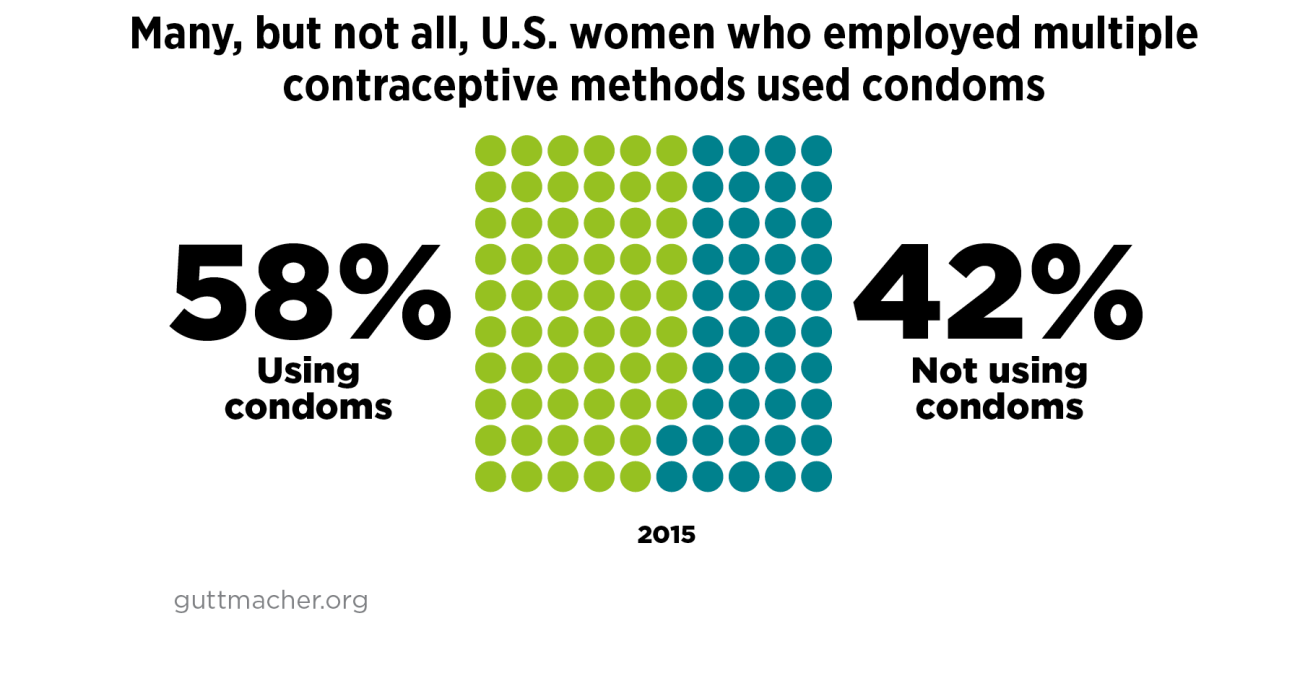Most of the data in this fact sheet come from the National Survey of Family Growth (NSFG) and apply to U.S. women* of reproductive age who use contraceptives.† Unless otherwise noted, data are for 2016 and the contraceptive methods noted are the most effective method used during the month of the survey interview. Data are drawn from the female respondent file of the NSFG in recognition that the majority of contraceptive methods available are designed to be used by those with the capacity for pregnancy (i.e., women).
- Among contraceptive users aged 15–49 in 2018, female permanent contraception was the most common method used (28%), followed by pills (21%), male condoms and IUDs (both 13%). The two most popular methods have remained so since 1982,1–3 but notable shifts within the overall method mix—especially since 2002—include increases in the use of long-acting reversible contraceptive (LARC) methods and decreases in the use of permanent methods and short-acting reversible contraceptives.1,4,5
- In 2018, more than one-third (36%) of users aged 15–49 relied on some form of permanent contraception, such as tubal ligation or a partner’s vasectomy.4
- Some 16% of contraceptive users aged 15–49 in 2018 relied on LARC methods—IUDs and implants.4
- Use of any short-acting hormonal method other than pills, such as injectables, vaginal rings or patches, was relatively low among users aged 15–49 in 2018, at 5%.4
- In 2018, about one in five contraceptive users aged 15–49 (21%) relied on methods used at the time of intercourse such as condoms, withdrawal, emergency contraception and natural family planning methods (periodic abstinence, cervical mucus tests, temperature rhythm or calendar rhythm) as their primary method.4


